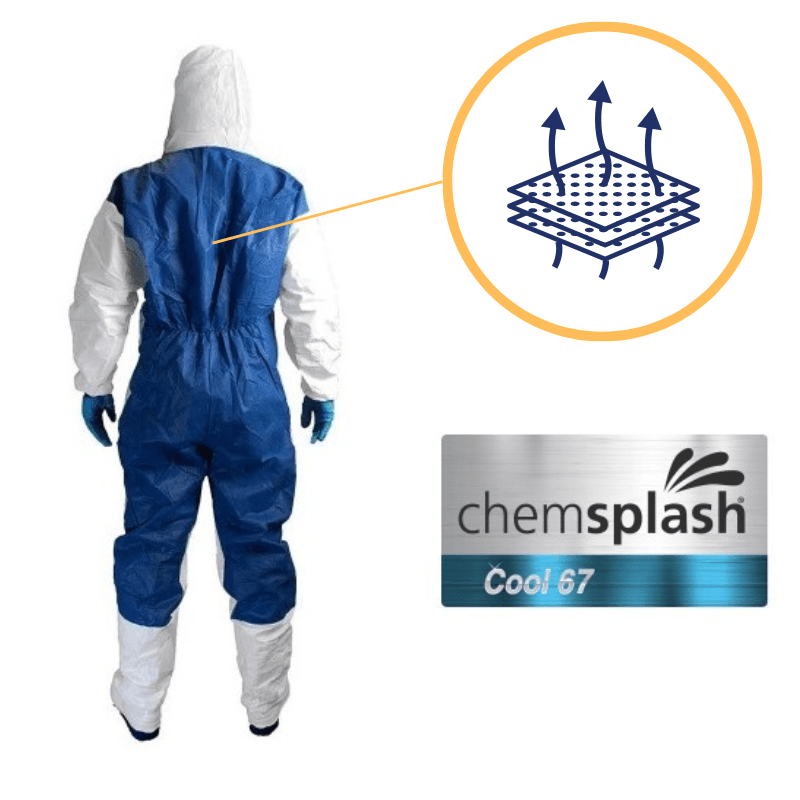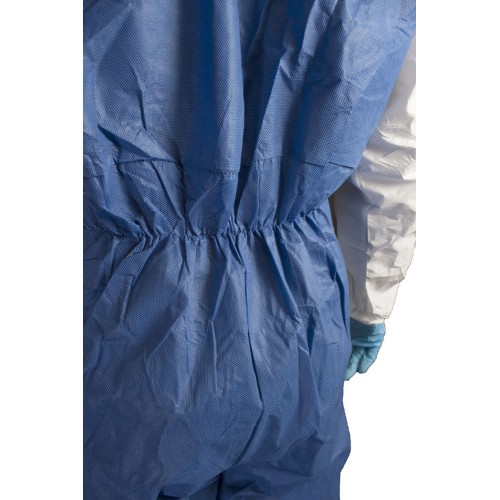Preventing Heat Stress: Breathable Type 5/6 Disposable Coveralls for Hot Environments
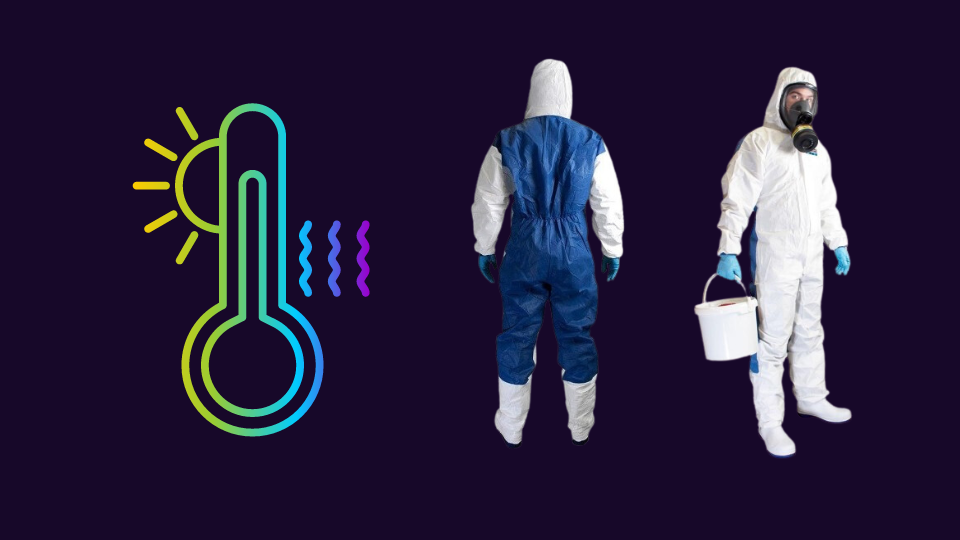
Heat stress is a serious concern for individuals working in hot environments, such as industrial settings, construction sites, and more. The risk of heat-related illnesses and exhaustion can be significant, making it crucial to implement effective preventive measures. One such measure is the use of breathable Type 5/6 disposable coveralls. In this article, we will delve into the importance of preventing heat stress, the benefits of using breathable disposable coveralls, and how they contribute to a safer and more comfortable work environment.
TABLE OF CONTENTS
- Understanding Heat Stress
- The Role of Protective Clothing
- Introducing Breathable Type 5/6 Disposable Coveralls
- Other Heat Stress Prevention Techniques
- Signs and Symptoms of Heat-Related Stress
Understanding Heat Stress
Heat stress is a critical health concern that arises when the body struggles to maintain its core temperature in the face of extreme heat and humidity. The human body has a remarkable ability to regulate its internal temperature within a narrow range, typically around 37°C (98.6°F). However, when exposed to excessive heat and high humidity, this intricate balance can be disrupted, leading to a cascade of physiological reactions that jeopardize overall well-being.
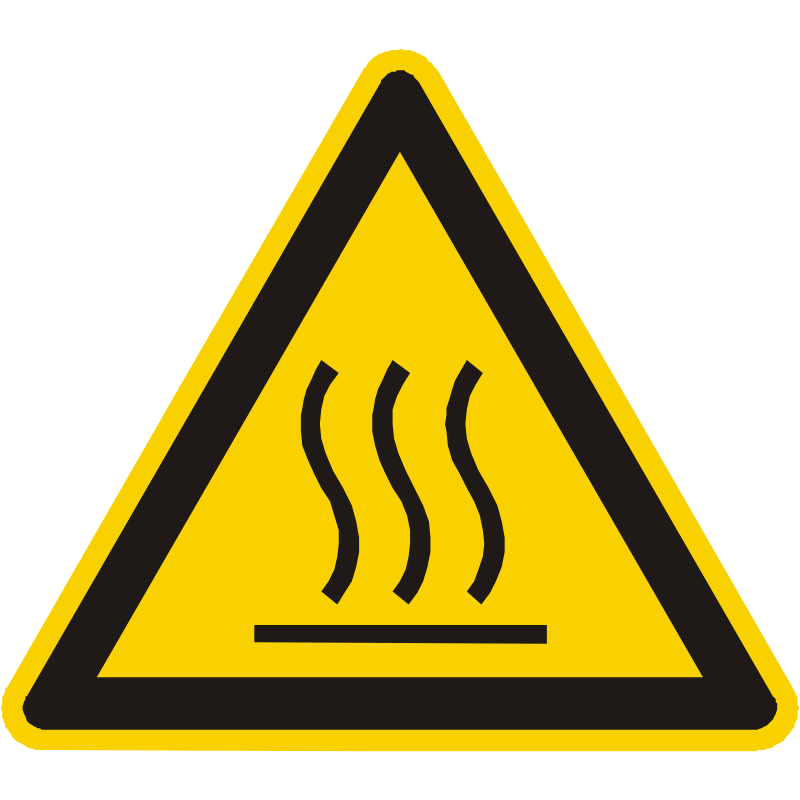
When the body's internal temperature begins to rise due to environmental factors, such as prolonged exposure to hot working conditions, its cooling mechanisms come into play. One of the primary mechanisms is sweating, where the body releases moisture through sweat glands to the skin's surface. As the sweat evaporates, it carries away heat and helps cool the body.
However, in environments with high humidity, the effectiveness of this cooling mechanism is compromised. The air is already saturated with moisture, making it challenging for sweat to evaporate efficiently. As a result, the body's core temperature continues to rise, and the risk of heat-related illnesses intensifies.
Heat stress is a term that encompasses a spectrum of heat-related conditions, ranging from mild heat cramps to more severe heat exhaustion and potentially life-threatening heatstroke. Heat exhaustion is characterized by symptoms such as heavy sweating, weakness, dizziness, nausea, and a rapid heartbeat. If not addressed promptly, it can escalate to heatstroke, a medical emergency where the body's internal temperature reaches dangerously high levels, leading to confusion, loss of consciousness, and even organ failure.
Industries where workers are exposed to high temperatures, such as manufacturing, agriculture, and construction, need to be acutely aware of the risks associated with heat stress. Prolonged exposure to these conditions can result in reduced productivity, increased absenteeism, and a heightened potential for accidents due to impaired cognitive and physical functioning.
To mitigate the risks of heat stress, industries must prioritize the well-being of their workforce. This involves implementing comprehensive heat stress management strategies that encompass various aspects, from engineering controls and personal protective equipment to education and awareness programs.
Engineering controls could include measures such as providing shaded rest areas, using fans and ventilation to improve air circulation, and modifying work schedules to minimize exposure during peak heat hours. Personal protective equipment, such as breathable Type 5/6 disposable coveralls, plays a vital role in safeguarding workers from heat stress while maintaining their productivity and comfort.
Ultimately, understanding the intricacies of heat stress is the first step toward preventing its adverse effects. By acknowledging the physiological responses to heat and humidity and recognizing the signs of heat-related illnesses, industries can create safer work environments that prioritize the health and safety of their valuable workforce.
The Role of Protective Clothing
Ensuring the safety of workers is paramount in any industry, and protective clothing plays a pivotal role in achieving this goal. Protective clothing is designed to shield workers from various hazards, including chemical substances, particles, and physical dangers. However, in environments where heat and humidity are prevalent, conventional protective gear can inadvertently become a contributing factor to the very issue it seeks to prevent: heat stress.
Conventional protective clothing, while effective in safeguarding against potential dangers, often poses challenges when it comes to heat regulation. Many traditional garments are constructed with materials that limit the flow of air and hinder the body's natural cooling mechanisms. As a result, workers can find themselves trapped in an uncomfortable cycle – the protective clothing that is meant to keep them safe might lead to increased heat retention and the risk of heat-related illnesses.
This is precisely where breathable Type 5/6 disposable coveralls step in as a game-changer. These innovative garments are crafted with a deep understanding of the intricate balance between protection and comfort. They are constructed using advanced materials that strike the perfect equilibrium between shielding workers from potential hazards and allowing their bodies to manage heat effectively.
The genius of breathable disposable coveralls lies in their design. The materials used are not only lightweight but also engineered to facilitate air circulation. This strategic design choice enables a continuous exchange of air between the garment and the surrounding environment, preventing the build-up of excess heat. The moisture-wicking properties of these coveralls further enhance their effectiveness by efficiently managing sweat and moisture, keeping the body dry and cool.
For workers in hot environments, the difference brought about by breathable coveralls can be profound. These coveralls empower workers to carry out their tasks without the discomfort and potential dangers associated with overheating. The improved breathability helps maintain the body's core temperature within a safe range, reducing the risk of heat exhaustion, heatstroke, and other heat-related health issues.
Moreover, the incorporation of breathable Type 5/6 disposable coveralls into workplace safety protocols demonstrates a commitment to the holistic well-being of the workforce. When employees can perform their duties without the hindrance of heat stress, their productivity and morale remain high. This, in turn, fosters a positive work environment where workers feel valued and protected.
In conclusion, protective clothing remains an essential component of worker safety across industries. However, the evolution of protective gear to address specific challenges, such as heat stress, is crucial. Breathable Type 5/6 disposable coveralls exemplify the synergy between protective function and comfort, highlighting the potential for innovation to revolutionize workplace safety. By embracing such advancements, industries can create an environment where workers not only feel safe but also empowered to thrive, even in the most demanding of conditions.
Introducing Breathable Type 5/6 Disposable Coveralls
Breathable Type 5/6 disposable coveralls stand as a revolutionary solution that strikes a harmonious balance between safeguarding workers against hazardous substances and ensuring optimal comfort. These coveralls represent a significant advancement in protective clothing, particularly for individuals working in challenging environments where heat and potential hazards are constant companions.
Crafted with precision, these coveralls are designed to serve as a reliable shield against various hazardous substances, ranging from particulates to limited liquid splashes. What sets them apart is their unique ability to facilitate air circulation, a feature that plays a pivotal role in combatting heat stress. The coveralls are meticulously fashioned from lightweight, breathable materials that not only offer the necessary protection but also contribute to the wearer's overall comfort.
The advantages of breathable disposable coveralls extend beyond their protective attributes. For workers who find themselves in hot environments, the coveralls become a trusted ally in the battle against heat-related illnesses. Here's why:
Benefits of Breathable Disposable Coveralls
- Heat Regulation: The genius of these coveralls lies in their breathable composition. The materials employed enable the efficient exchange of air, allowing excess heat to dissipate. This intrinsic heat regulation mechanism significantly reduces the risk of overheating, ensuring that workers remain within a safe temperature range even when faced with intense heat.
- Moisture Management: Sweating is the body's natural response to heat, but in humid conditions, sweat can accumulate and contribute to discomfort. Breathable coveralls excel in moisture management, swiftly wicking away sweat and moisture from the skin's surface. This process not only keeps the body dry but also prevents the stickiness and chafing often associated with prolonged exposure to heat and humidity.
- Flexibility: A lightweight and flexible design further enhances the appeal of these coveralls. Unlike bulkier protective gear, they allow for unrestricted movement. This attribute is especially crucial in demanding work scenarios where agility and flexibility can directly impact productivity and efficiency.
- Reduced Heat Stress: By enabling air circulation, these coveralls serve as a formidable defense against heat stress. The continuous flow of air ensures that the body's cooling mechanisms are optimally supported, reducing the risk of heat-related illnesses such as heat exhaustion and heatstroke.
- Protection: While prioritizing breathability and comfort, these coveralls do not compromise on their protective capabilities. The advanced materials used in their construction effectively shield workers from harmful substances, maintaining a delicate equilibrium between protection and comfort.
Emphasizing the well-being of workers, particularly those operating in hot environments, breathable Type 5/6 disposable coveralls herald a new era in workplace safety. These coveralls offer more than just protection – they offer the promise of a safer, more comfortable work experience.
Features to Look for in Coveralls
When choosing breathable disposable coveralls, a range of features should be considered:
- Moisture-Wicking Capabilities: Opt for coveralls with effective moisture-wicking properties that swiftly move sweat away from the skin.
- Breathable Fabric with Microporous Technology: Look for coveralls constructed with fabric that employs microporous technology, allowing for the efficient exchange of air while maintaining protective barriers.
- Reinforced Seams for Durability: Reinforced seams contribute to the longevity of the coveralls, ensuring they remain intact even in demanding work conditions.
- Elastic Closures for a Secure Fit: Elastic closures offer a snug and secure fit, preventing any gaps that might compromise protection.
- Hood and Boot Options for Full-Body Protection: Consider coveralls that come with integrated hoods and booties for comprehensive coverage, particularly in environments where head and foot protection are necessary.
In essence, the integration of breathable Type 5/6 disposable coveralls into workplace safety protocols signifies a commitment to worker well-being that extends beyond traditional protective gear. It speaks to a forward-thinking approach that addresses the nuanced challenges posed by both hazardous substances and heat stress, ultimately fostering an environment where workers feel not only safe but also empowered to excel.
Choosing the Right Size and Fit
Selecting the appropriate size and fit of breathable coveralls is a critical step in optimizing their benefits. A well-fitting coverall is not just about aesthetics – it's about ensuring the wearer's comfort, preventing potential chafing, and facilitating unhindered movement. When coveralls fit correctly, workers can focus on their tasks without the distraction of ill-fitting clothing. To make the right choice:
- Consult Sizing Charts: Manufacturers provide detailed sizing charts to guide you in choosing the perfect fit. These charts typically consider height, chest, waist, and hip measurements. Make sure to measure accurately and refer to the manufacturer's recommendations.
- Consider Layering: Keep in mind the clothing that might be worn underneath the coveralls, such as additional protective gear or clothing for temperature regulation. Allow for a comfortable fit without unnecessary tightness.
- Allow for Movement: A well-fitting coverall should enable the wearer to move freely and comfortably. Test the range of motion while trying on coveralls to ensure they don't restrict movement, especially in tasks that require agility.
- Prevent Excess Fabric: Avoid choosing coveralls that are too large, as excess fabric can create discomfort, increase the risk of snags, and potentially compromise safety.
- Test the Closure: Ensure that zippers, buttons, or closures are secure and functional. A proper closure prevents gaps that could expose the wearer to hazards.
By adhering to these guidelines and carefully considering sizing and fit, you can ensure that workers have coveralls that enhance both their protection and their comfort.
Maintaining and Cleaning Coveralls
Regular maintenance and proper cleaning routines are pivotal for prolonging the life and effectiveness of breathable coveralls. Adhering to manufacturer guidelines guarantees that the coveralls continue to offer the intended level of protection. Here's how to maintain them effectively:
- Follow Manufacturer Instructions: Manufacturers provide specific instructions for cleaning, washing, and storage. Always refer to these guidelines, as they are tailored to the unique properties of the coveralls' materials.
- Pre-Treat Stains: Address stains as soon as possible to prevent them from setting in. Follow recommended stain removal techniques to avoid damaging the fabric.
- Choose the Right Detergent: Use mild, non-abrasive detergents that won't compromise the fabric's integrity. Harsh chemicals and abrasive detergents can deteriorate the materials and their protective qualities.
- Use Recommended Settings: When washing coveralls, use the settings recommended by the manufacturer. Follow the recommended temperature, wash cycle, and drying instructions to prevent shrinkage and damage.
- Inspect Regularly: Regularly inspect coveralls for wear and tear, loose seams, or damaged closures. Replace or repair coveralls that show signs of damage to maintain their effectiveness.
By adopting a consistent and diligent approach to maintaining and cleaning breathable coveralls, you ensure that they remain a reliable barrier against potential hazards while preserving their comfort and breathability.
Other Heat Stress Prevention Techniques
Beyond the benefits of breathable coveralls, implementing additional heat stress prevention techniques is crucial in safeguarding workers' well-being:
- Stay Hydrated: Drinking water frequently is paramount in maintaining body temperature and preventing dehydration. Encourage workers to drink water even before they feel thirsty, as thirst isn't always a reliable indicator of hydration needs.
- Take Breaks: Schedule regular breaks in shaded or air-conditioned areas to allow workers to cool down and recover from heat exposure.
- Rotate Tasks: Distribute physically demanding tasks throughout the day to prevent overexertion and excessive heat accumulation.
- Wear Sun Protection: In sunny environments, wearing sunscreen, hats, and sunglasses shields workers from direct sunlight and reduces the risk of heat-related illnesses.
Staying Hydrated: A Key Factor
Undoubtedly, staying hydrated stands as one of the most pivotal factors in preventing heat stress. The human body's cooling mechanisms heavily rely on hydration to regulate temperature effectively. Encouraging workers to drink water consistently, even before they feel thirsty, helps maintain a healthy internal temperature and reduces the risk of heat-related illnesses.
Importance of Regular Breaks
Frequent breaks are not just moments of respite – they play a pivotal role in preventing heat stress and ensuring overall well-being. Regular breaks allow the body to cool down, recover from heat exposure, and recharge for the tasks ahead. They are a strategic measure in maintaining optimal performance, reducing the risk of accidents, and fostering a work environment that prioritizes worker health.
Training and Education
In the fight against heat stress, knowledge is a potent tool. Proper training and education are vital components of creating a workforce that understands the risks, recognizes the symptoms, and is equipped with preventive strategies. Workers should be well-informed about the dangers of heat-related illnesses, the importance of staying hydrated, and the significance of using protective gear such as breathable coveralls.
Signs and Symptoms of Heat-Related Stress
Recognizing the signs of heat-related stress holds the key to proactive intervention for both workers and supervisors. The body sends out distress signals when it's struggling to cope with heat, and being attuned to these signals can make a crucial difference. Here are the symptoms to watch for:
- Dizziness: Feeling lightheaded or dizzy, often accompanied by unsteadiness, can indicate that the body is struggling to regulate its temperature.
- Excessive Sweating: While sweating is a natural response to heat, excessive sweating – even when not engaged in physically demanding tasks – may signify a potential issue.
- Nausea: Feeling nauseous or queasy could be a sign of heat stress. It's the body's way of indicating that it's under strain.
- Rapid Heartbeat: A heart racing at an unusual pace can be a clear indicator that the body is working overtime to manage its internal temperature.
- Confusion: Heat-related stress can impact cognitive function. If an individual is showing signs of confusion or altered mental clarity, it's time for action.
Recognizing these symptoms is the first step. However, it's essential to move swiftly from recognition to action. Prompt response is vital, as these symptoms can escalate into more severe heat-related illnesses, including heat exhaustion and heatstroke.
Educating workers about these signs empowers them to be proactive in taking preventive measures and seeking assistance when needed. It's not just about identifying symptoms; it's about fostering a culture where workers are vigilant about their well-being and that of their colleagues.
By integrating these strategies into workplace safety protocols, industries construct a comprehensive shield against heat stress. Every component – from breathable coveralls and hydration practices to regular breaks and education initiatives – plays a vital role in the intricate tapestry of prevention.
In unison, these elements create an environment where the workforce is safeguarded from the potential perils of heat stress. The result: a safer, more productive workspace that nurtures the long-term health of employees and bolsters the foundation of the industries they drive.
| Chemsplash Cool 67 Coverall Type 5/6 - Breathable Back Panel |
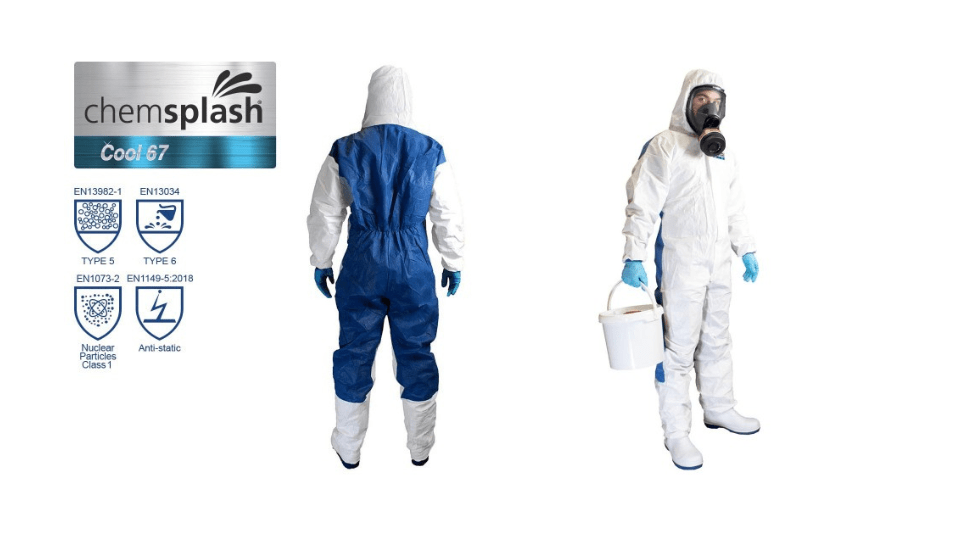 |
Conclusion
As the curtain falls on this exploration of heat stress prevention, the gravity of its significance becomes undeniable. In environments where soaring temperatures and humidity converge, worker safety and comfort are at stake. This article has delved into a holistic approach, showcasing the vital role of breathable Type 5/6 disposable coveralls.
From grasping the complexities of heat stress to understanding how conventional protective wear can inadvertently contribute to the problem, the narrative has unfolded layer by layer. The emergence of breathable coveralls, however, marks a turning point. These garments bridge the gap between protection and comfort, offering a breathable haven in the face of heat stress.
But the journey doesn't end with acquiring coveralls. Proper sizing, upkeep, and additional prevention techniques amplify their efficacy. The symphony of staying hydrated, taking breaks, and recognizing symptoms of heat-related stress creates an environment where workers' welfare is paramount.
In essence, this isn't just an article; it's a call to arms. It beckons industries to embrace innovation and prioritise their workforce's well-being. With breathable coveralls, industries have a powerful tool to combat heat stress. The battle rages on, but equipped with knowledge and innovation, workplaces can flourish in the face of adversity.
Your email address cannot be published. Required fields are marked*

